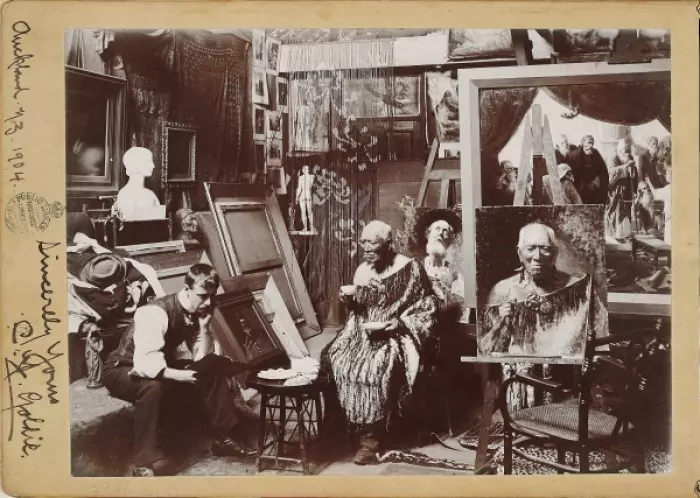As 2021 unfolds, the prospect of international travel still seems a distant dream and the current economic state of the country is far better than anyone could have predicted in the depths of the covid lockdown last year. It seems reasonable to expect that the New Zealand art market will remain buoyant this year, and for new buyers entering the market, it’s important to have an arsenal of knowledge behind you so you can make wise and informed purchasing decisions.
This series of articles for BusinessDesk on buying art for investment has already addressed how to increase your general knowledge of art history and specific artists of interest, as well as how to set an art-purchasing budget.
From here, we can move into what can be called the Golden Rules of Collecting, and to do this you need to buy the best example of an artist’s work that you can afford by focusing on four key areas: quality, rarity, condition and provenance. The first two areas will be covered in this article.
Assessing the quality of an artwork will become easier once you’ve looked at and studied art widely. Experienced collectors have a wealth of visual knowledge stored away, which means they can make quick judgments, but for those starting out, it’s best to focus on buying works that demonstrate an artist’s signature style. If an artist usually paints still-life subjects or has earned a reputation for painting landscapes, these are the works that will hold their value into the future, so don’t be tempted to splash out on purchasing something atypical.
The paintings of C.F. Goldie are a good example. He is best known for his portraits of Māori sitters painted in the early 20th century and these works are his most valuable and desirable. Prior to this, he studied in Paris and there are a number of “academic” works produced during this period that come to market from time to time. While still valuable, they aren’t typical, and for the same price as an oil painting from this period, you could purchase a pencil drawing of a Māori sitter which in time will increase in value ahead of the European works.
A work of good quality will always stand up on its own with the passing of time. Perhaps it comes from the artist’s most significant series, or it’s the most successful work in an exhibition in terms of the composition or painting technique, and by comparing the work you are interested in with others from the same series or period, you will find this will become apparent. Purchasing works of quality means being discerning and saying no to a purchase if the price isn’t right or the art doesn’t fit your collecting criteria. It can be easy to be tempted to buy a work which seems like a bargain, but it’s better in the long run to stick to your guns and focus on quality.
Quality segues quite neatly into rarity, because although it’s best practice to concentrate on typical examples of an artist’s work, rarity is also important, although in this context it means limited in number or scarcely available rather than something different or unusual.
Many well-known artists produce high-quality prints within their artistic practice and this is an affordable way to own something by them. Obviously, the more limited the print run is, the fewer prints there will be around, and it stands to reason that the value will be higher in the long term. A print run of up to 50 editions is optimal, but when it is getting into the hundreds, the ongoing value should be carefully considered.
Rarity could also represent a small but important series of an artist’s work, such as Colin McCahon’s religious paintings from the early 1950s, which were mostly purchased at the time by his friends (many of these works are now housed in institutions), or a 1930s oil painting by Frances Hodgkins – these are few in number compared to the watercolours of the same period – or very large and significant Bill Hammond bird paintings, which are highly desirable and very rarely come on the open market.
Focusing on quality and rarity and buying an example of a signature work by an artist is like having a safety net for the artwork. These works are the “tried and true” examples. They may have been ground breaking when painted, or have become significant later in the context of the artist’s career, or have always had great commercial appeal, but these works are the ones that will always be written about, exhibited and sought after by collectors.
Briar Williams is a specialist fine art valuer at artvaluationsnz.com














